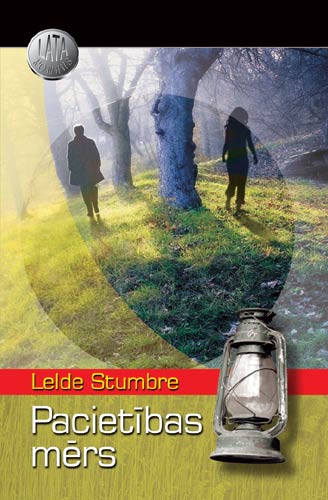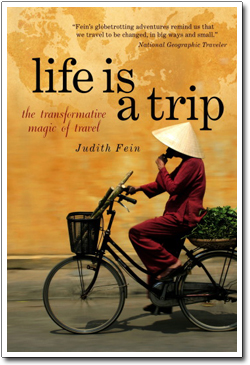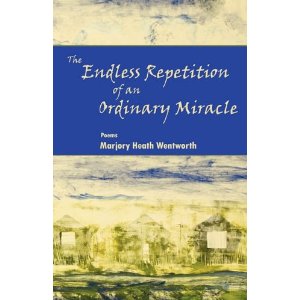|

Meet
Me at the Met by Eric G. Müller
Book
Review by Zinta Aistars
·
Paperback: 260 pages
·
Publisher: Plain View Press, 2010
·
Price: $18.95
·
ISBN-10: 9781935514497
·
ISBN-13: 978-1935514497
Being an artist’s daughter and dabbling
in various art forms myself, I was instantly drawn to Eric G. Müller’s novel, Meet
Me at the Met. I have walked a great many art museums with my father, painter
Viestarts Aistars, from earliest childhood, listening to his stories about the paintings and artists whose work we viewed,
and so I greeted walking the Metropolitan Museum of Art in New York again in Müller’s book.
The premise of the novel is that a middle-aged man
named Clarence is in emotional turmoil, in need of sorting out his life, his thoughts, his emotions, and he finds the perfect
place to do this at the Met. Black and white art photos illustrate the book as Clarence muses on one painting or another,
one artifact or another, and lets the art elicit his innermost thoughts. He expresses these in his writing.
Great premise, yes, but the book gets off to a weak
start. The writing can be good (enough), but never moves beyond that, and too often falls below that. Clarence can come off
at times as whiny, too self-involved, and tends to spin around and around a great deal without making any progress in his
introspection. We hear more about his angst in writing then in reading real content.
The first pages gave me the sense of reading a high
school diary, dotted with exclamation marks:
“…
the rare contrast between her syrupy soft skin—the color of pure, polished amber—and the thick, smooth waves of
long, straight red hair that shone like bronze in the sun, and turned into undulating sheets of saffron in the shade, was
just as extraordinary.” (Page 19)
Syrupy skin? Hair that is wavy and straight all
in the same sentence? This kind of sloppy, effusive writing, unfortunately, occurs too often. Dialogue, too, tends to occur
in one person’s long speeches, interspersed by the other saying, “And what happened then?”
Clarence writes about love and his failures in it.
There is ex-wife Arietta (she of syrupy skin and wavy, straight hair) and their daughter, Alicia (this relationship, too,
can be troubled as his daughter struggles with an eating disorder). There is a young girl, Katrina, who has a crush on him
that evolves into what nearly turns into a sexual harassment case. There is a romance with a museum security guard, Carrie
of India, that brings domestic abuse into the storyline—a topic that is very heavy indeed, but probably deserved a novel
of its own, rather than to be an interlude of a few chapters here. There is also an odd one-night stand while Clarence is
still married to Arietta that seems to want to be made excusable, when such things never are. Let’s just say that sleeping
with a suicidal woman is just another form of abuse.
Less is more. Müller has a great premise here, and
he might have gone farther and deeper with it, rather than wandering off on tangents. I suspect that had he restricted himself
to writing only within the walls of the Met, keeping the storyline between a man and art, his heart and soul exposed by what
he sees, and so projecting himself, this novel would have been that much more focused.
This is a novel with potential; had it been treated
to a good, hard rewrite, trimming away the extraneous, it could have achieved a higher level of art in itself.
Eric G. Müller lives in upstate New York, teaching
music, drama, English literature and creative writing. Meet Me at the Met is his
second novel.

Strike
Dog (A Woods Cop Mystery), by Joseph Heywood
Book
Review by Zinta Aistars
·
Paperback: 392 pages
·
Publisher: The Lyons Press, 2008
·
Price: $15.95
·
ISBN-10: 1599213648
·
ISBN-13: 978-1599213644
Fifth in the Woods Cop Mystery series, Strike Dog is another engrossing murder mystery by Michigan author, Joseph Heywood. Heywood, in fact, lives in
the very same town that I do, and spends a great deal of time himself in Michigan’s Upper Peninsula, as I do, so that
was my initial hook into reading his novels. Once I became acquainted with sharp-minded and equally sharp-tongued conservation
officer (CO) Grady Service, however, I was hooked for reasons of good reading.
Strike
Dog is probably my favorite in the series thus far. When Heywood writes love stories, as he does here and there throughout
the series, I tend to lose interest—his female characters lean toward “hot and tough” female stereotype,
a bit too over the top—but when his sensual encounters stay in the background, as they do here, I enjoy the action and
the skillful writing.
The storyline of this book is built upon what first
appears to be an accident, but soon becomes clearly a murder of Service’s love, Maridly Nantz (hot and tough female
CO) and his son, Walter. It appears the two veered off the road and hit a tree, but Service knows better. Nantz was an expert
pilot, he keeps saying to anyone who will listen, meaning that she knew how to respond under stress and in whatever circumstance.
What ensues is an investigation that at first seems
independent of the car accident, but eventually ties into it. Service is pulled into working with the FBI to solve a series
of gruesome murders of conservation officers in and outside of Michigan. It gives Heywood a chance to shine at what he writes
best—rich descriptions of the northern wilderness with a bevy of colorful characters and a buildup of suspense as clues
slowly come together toward a conclusion.
Grady Service is a woods cop that the reader will
enjoy learning about and following on his treks through the woods. I’ve enjoyed watching him take on more and more character
throughout the series—a tough guy with a keen mind, a sharp wit, and a deep sense of integrity. The characters that
show up in this and previous books, such as the eccentric villain Limpy Allerdyce, are also a treat.
In fact, it’s a treat just to see what character
name Heywood will come up with next—one more unusual than the other. Fiannula, Rud Hud, Tatie Monica, Treebone, Shamekia
Cilyopus-Woofswshecom just to start on the roster. One senses the author having
a bit of fun, with the occasional jab at a real-life politician (Dubya in this book) at their expense. Dialogue sparkles,
dialect adds sense of place, and the action takes few breaks.
“Service
drove back to the encampment near the crime scene, hoping Shamekia would come up with some answers. Had the feds missed something?
This was more than possible, he knew; the Bureau was the same outfit that knew some jerkwads from the Middle East were taking
flight lessons with more interest in takeoffs than in landings, and did nothing about it. Shit happened in bureaucracyland;
investigators blinded themselves with their own assumptions, and it didn’t hurt to question everything, even with an
agency with more assets than God.”
By now, I’m in for the long haul, ever on
the lookout for the next in the series, less for the reveal of the solved criminal case as the journey of getting there, U.P.
style.

Pacietības
Mērs (The Limit of Patience) by Lelde Stumbre
Book
Review by Zinta Aistars
· Publisher: Lauku Avīzes, 2006
· Paperback, 191 pages
· Language: Latvian
· ISBN: 9984-542-59-9
What a treat, on my last birthday, to receive a
book from Latvia from a good friend. My first language, after all, is Latvian—the only language spoken in my childhood
home. I learned to read in Latvian two years before I mastered reading in English at the ripe age of five, so whenever I have
a chance to return to the literature of my roots, I am most pleased to do so.
As soon as I began reading, I fell deep into a world
with which, for better or for worse, I could identify. The surroundings are the Latvian countryside—a gently rolling,
green land of forest and lakes, juxtaposed against the city, where a full half of the country’s population resides,
the Baltic country’s capitol of Rīga.
The main protagonist of the novel is Anna, a single
mother with a teen daughter and a set of twin boys. She has recently moved from Rīga to the countryside, a city woman
accustomed to city ways, but now enchanted with the country life and determined to learn how to create a comfortable home
within it. If she did not move there of her volition—the move was instigated by her “other half”—then
she is committed to make the best of it.
While initially it seems that Anna may have an invisible
husband, Edvards, the father of her children, it is soon revealed that she is not actually married to him at all. The two
had lived together for a while in Rīga, but then lived apart, and yet still continued to relate to each other as husband
and wife, if in separate households. If that may seem a bit odd, having spent some time in Latvia myself, I realize that the
Soviet years (which, thankfully, ended in 1991) wreaked havoc on relationships and lifestyles. Married couples sometimes lived
apart, divorced couples sometimes lived together, and a number of other strange arrangements could be found as housing was
at a premium, and often unavailable. One held onto an apartment or a house at any cost and in spite of any personal inconvenience.
Strange bedfellows were common.
In this case, however, it is Anna’s ambiguity
about her relationship with Edvards that is the cause of these on-again, off-again living arrangements. Her limit of patience
seems boundless. Edvards, who works with the national opera, appears and disappears, strolling in and out of her life and
the lives of their children, at unpredictable whim. Between visits, he leaves his family completely stranded and with no means
of communicating with him. (Other women? Take a guess.)
Why would Anna put up with this abusive behavior?
But of course: because she loves him. Because hope springs eternal. Because love is blind and sometimes love is stupid. Haven’t
we all been there? Hopefully only in our adolescence, but too many adult women get duped into wearing such blinders with their
adored men. We see what we want to see, we rationalize and we excuse, we pardon and we forgive, only to be taken for granted
yet again. Anna is the perfect embodiment of the abused woman syndrome.
Edvards calls her his angel. Typical of emotional
and psychological abusers, he appears clueless as to the cruelty of his own behavior, and he sincerely seems to love (in his
own way) Anna and his children. Charming, intelligent, articulate, smooth as silk, he whisks onto the scene with gifts and
cheer, his every appearance an instant holiday. Again and again, Anna is swept off her feet, and just so her children are,
too.
Anna’s country neighbors are baffled by what
they see happening next door. Why would this pretty young woman put up with a man who treats her this way? Relationships develop
between Anna and the local rich businesswoman, Arta, and a complex and troubled relationship with Arta’s husband, Jānis.
Melānija and Osis are the neighbors who have big hearts, offer much help, but struggle with their own troubles with Osis’
alcoholism.
We see Anna’s inability to hold boundaries
with her neighbor Jānis, too, as the man early presents himself as a second villain in the story, taunting her about
her disappearing husband, offering himself as a substitute bedmate, enraged when she refuses. When he eventually forces himself
upon her, however, Anna once again turns angelic, forgiving even rape. Indeed, there are such moments that the reader would
like to slam her up against the wall and slap some sense into her … but such is the typical psyche and profile of the
abused woman. Her martyrdom seems never-ending.
Anna seems spineless around men, but she is strong
when it comes to taking care of her household. We see the first flare of real fire in her when Edvards slights their daughter.
It is one thing to take the abuse herself, quite another when it is heaped on her child. Little by little, over the course
of one year of passing seasons, we see her gain knowledge in how to run a country household, but also how to hold her own
in her relationships.
Anna does, at long last, find the limit of her patience,
even as she leaves a toe dipped in abusive waters. One suspects she hasn’t yet fully learned to take care of herself,
but, well, hope springs eternal that someday she will.
Lelde Stumbre is well-known in Latvia as a playwright,
and has worked as such for more than three decades. This is her first venture into novel writing. There is a sense of the
theatrical in this debut novel, almost as if one can see the stage lighting shift across the faces of the characters, but
all in all, she has had a successful crossing over into light if not quite literary fiction. Pacietības Mērs was a quick and enjoyable read, presumably intended to be “light reading”
(albeit on the very heavy topic of emotionally abusive relationships) as part of the “Lata Romans” series.

Once
Upon a River by Bonnie Jo Campbell
Book
Review by Zinta Aistars
·
Hardcover: 320 pages
·
Publisher: W. W. Norton & Company (July 5, 2011)
·
Price: $25.95
·
ISBN-10: 0393079899
·
ISBN-13: 978-0393079890
Reading a Bonnie Jo Campbell book is like sitting
down for a cuppa, or a cold one, with your very best gal pal. You can let loose and relax, kick your shoes off, loosen your
girdle, because she does, her story does, the way it weaves in and around you and floats you along, easy, easy. Just like
a river. No pretenses. Nearly effortless. No masks required, because Campbell will see through them, or, more accurately,
doesn’t seem to have a clue that masks exist. She is what she is, and her books reflect that authenticity. Maybe no
one has convinced Campbell that some in the harried human race believe masks are required gear for survival.
Not in Campbell’s world. She is the rare blend
of a literary talent with a knack for telling a good tale. While there are plenty of one, and quite a few of the other, a
solid blend of the two is a rarity. We begin to float down her Once Upon a River,
rocked by waves without ever being jerked around, not even at the sound of a gunshot.
Campbell’s novel tells the story of Margo
Crane, a sixteen-year-old girl, beautiful without knowing it, or caring one way or another. Margo has grown up in Michigan
country, not far from the Kalamazoo River on a smaller river called the Stark. “The Stark River flowed around the oxbow
at Murrayville the way blood flowed through Margo Crane’s heart.”
This is a girl who handles a gun like an extension
of her own body. She idolizes Annie Oakley. She lives with her father in the back country, her mother abandoned her years
ago, and she is nowhere more at peace than when she is drifting on the river, watching painted turtles or catching fish or
counting herons. She knows how to skin a rabbit and she shoots to kill when she sees game.
A reoccurring theme in Campbell’s books
is the woman wounded by life and by men, as a result tough and wise and independent—a survivor. Margo Crane joins that
line-up. She isn’t educated in academics, but she knows how to maneuver through life like a river, and little scares
her. Like many young girls, she almost doesn’t get it when she is raped by an uncle—was it her fault somehow?
It is unclear to her when to defend herself, but when defending someone she loves, the line of fire is very clear. More than
once, more than twice, she must shoot with that uncanny ability she has to hit an acorn across a field to save the innocent
from the brutality of a man gone wild.
“She
studied the railroad-tie fence post from its base to its top, as it rose to about her own height. She studied the green fruit
with the burr acorn on top. Beyond it was the smooth expanse of river. She wrapped the sling around her left hand and elbow
and pushed against it. When she nestled the stock in her shoulder and pressed her cheek against it, her stance and grip were
solid. The Indian disappeared, and she was alone with her gun and her target. She looked through her sights … for Margo
there usually came an instant like now when she felt solidly rooted to the planet. Without a conscious decision to do so,
she smoothly pressed the trigger straight back and held it there as the rifle sent the bullet down the barrel on its way to
the acorn.” (Page 213)
Margo’s
journey floats her down that river by ripple effect from her actions, a stream carrying her along, but it is the stops
she makes along the way that bring in the conflicts of the story. Tossed out of life as she knows it when her father dies,
in part due to her sharp shot, she searches for the mother who abandoned her. She finds her, if not quite what she is looking
for, but finds also mutations of love, mutations of hatred, and sometimes the two intertwined.
An inescapable lesson for a pretty woman is to always
watch for the man who will hurt her, as nearly all of them do—even the ones who seem to care about her. Rape is always
a threat, and sometimes more than just a threat. She is conflicted in how to handle an unwanted pregnancy, thinking she wants
one kind of resolution while moving almost unwillingly toward another.
The real love of Margo’s life, alongside the
river, turns out to be Smoke—a man too old to be a threat or even a caretaker, but someone who allows her to become
one. With his crass manner, not unlike her own, he teaches her to allow for gentler moments. Each of them have a battle to
wage in their lives, although each to a different end. Yet that is how a river moves between its banks: living and dying intertwining,
youth and old age, the gentle moment leaning against the instant of brutality, moving along the way life pushes you, but occasionally
managing to paddle to shore, until you are pushed into the rapids again.
Campbell understands that the world is generally
made to fit one kind of person—the kind that does not exist anywhere but in the hopeful mind. All the rest of us just
have to make do. Her characters are those who do not fit but eventually surprise with how exceptionally well they make do.
Once
Upon a River continues Campbell’s literary journey, easing along like an irresistible river. We can’t help
but be carried along. Emerging from these waters, we feel refreshed, if a little wiser, if a little more sure about fitting
in with a world of misfits. We all are one. Campbell makes that feel like the best way to be, if not the only way to
survive.
Bonnie Jo Campbell is the author of two short story
collections, Women & Other Animals (University of Massachusetts Press, 1999;
Simon & Schuster, 2003) and American Salvage (Wayne State University Press,
2009; W.W. Norton, 2009) and the novel Q Road (Scribner, 2003). American Salvage
was a finalist for the 2009 National Book Award and the National Book Critics Circle Award. She has won a Pushcart Prize and
the Eudora Welty Prize. Her stories, essays and poetry have appeared in many publications, including The Smoking Poet.
She was born and lives now in Kalamazoo, Michigan.

Life is a Trip: The Transformative Magic of Travel by Judith Fein
Book Review by Zinta Aistars
• Paperback: 128 pages
• Publisher: Spirituality & Health Books, 2010
• Language: English
• ISBN-10: 0981870880
• ISBN-13: 978-0981870885
The reasons why we who are travelers do so are probably as varied as we are. Just as the places to which we travel
and the ways in which we travel can differ widely, no doubt, so do the resulting experiences. I, too, am a traveler, and for
me, the travel experience is always transformative. I have never gone on a journey that doesn’t simultaneously become
an inner journey. As I cross physical terrain, so do I cross internal, that is, spiritual terrain in some way at the same
time. I never come home the same person as when I left.
For this reason, I was fascinated to read Judith Fein’s
Life is a Trip. The title alone clued me in to our similar approach to travel. I suspected these
14 stories would tell of the author’s trip, of course, but also how that trip changed her as a person.
One can
travel in luxury, and plan far ahead and for most all possible and imaginable consequences. Travel agents can secure our accomodations,
buy our tickets, insure our comfort, arrange most every moment of our traveling days … if we so choose. Or, we can travel
wildly, with open mind and heart, ready to see whatever we can see and embrace whatever comes with open arms. This would be
Judith Fein.
Fein is curious. She “lives to leave,” she says, and never does research on a place beforehand.
The occasional discomfort of travel does not intimidate her; in fact, she seems to seek it out. These travel stories take
her to North Vietnam, Turkey, Guatemala, New Zealand, Istanbul, Nova Scotia, Micronesia, Mexico, Israel, Spain, Newfoundland
and San Diego. She travels not just to see place, but to delve deeply into local culture, acquaint herself with the residents,
and involves herself in their lives as much as possible. A favorite thing to do is to get herself invited to weddings and
funerals, since these are occasions that she feels show her best what a culture is all about.
“The
difference between being a tourist and a traveler is that a traveler is open to unplanned experience and doesn’t have
her nose stuck in a guidebook, tracking down famous sites. She ventures out from behind glass windows (in hotels and touring
buses) and meets people. She connects. The difference between a traveler and a travel journalist is that the latter is always
searching for stories. But it occurred to me that any traveler can travel like a journalist—looking for cues and clues,
diving into new cultures, and coming home with great stories and new ways of responding to life.”
Being a spiritual seeker, Fein makes a point of connecting with healers, wise and holy persons, those
who seem to have some deeper connection than most to enlightenment. If not in person, she finds the experience that is more
intense than the every day. So, in one story, she attends a funeral in Micronesia, where she is stunned to witness one person
after another speaking about the deceased not in flowery eulogy, selecting only positive memories, and if none are available,
creating them—but quite the opposite. Funeral attendees express ill feelings, even anger, hurt caused them by the deceased.
Intrigued, she pays close attention so as to learn the reasons.
“At first I was shocked.
Can’t they just leave the dead in peace? I wondered. But I said nothing, sitting and listening to the wailing and the
talk. And the more I thought about it, the more I began to understand. During a Mog Mog funeral, people are expected to air
all of their feelings about the deceased person publicly, so the negative emotions don’t fester. The bad feelings are
expressed, rather than repressed, and then they are buried along with the body. At a funeral, people unleash their true feelings,
but speaking ill of the deceased outside of this context is taboo. And it is forbidden to bad-mouth the dead person once he
is lying in his final resting place.” (pg. 28)
What a wonderful discovery! In this alone is summed
up so much of the value of travel outside of our home territory. Suddenly, we see new and different ways to cope with global
experiences. Whereas in our American culture, good people tend to have the most well attended funerals, one would guess that
among the Mog Mog, those who have done most evil in their lives might have the most crowded funerals, as one after another
get bad feelings off their chests. Such funerals may even be motive to live better lives, it seems, as who would want a parade
of spitting and fuming funeral attendees. Either way, the day ends with all ill feelings buried. There is something to learn
here …
In another story, Fein travels to a Mexican prison. She looks again beyond the surface, looking for the
heart of the matter. Here, too, she learns something of value that could be shared with other cultures.
“Behind
every criminal face is a human who was once a bouncing baby, gurgling with glee, and aching to be loved. Then, something happened.
Each story is different, provocative, sad, and disturbing. Needs were denied or not met, the environment was violent or cruel
or indifferent, and feelings with no healthy outlets were expressed in unspeakable acts … What interests me is getting
a glimpse into a criminal’s heart and finding a place, however tiny, where there is authentic feeling and sensitivity.
To my mind, this is where hope for healing, rehabilitation, and redemption lie.” (pg.46)
As any traveler
sooner or later learns, understanding—of oneself and others, of persons and place—comes through stories. Fein
goes deep into place to find the people, and goes deep among the people to find the story. She is willing to deal with whatever
comes along her way in order to dig out that story. From that story, then, comes her own transformation. Or magic, if you
wish. And from her sharing these stories in Life is a Trip comes connection with readers,
letting the stories ripple out among all to spread that magic.
Adding visual delight to fine stories are the black
and white photographs taken by photojournalist Paul Ross, who is Fein’s husband and frequent travel companion. His photography
doesn’t just illustrate Fein’s stories. These photos add another dimension to the reading experience.
Judith
Fein is a longtime columnist for Spirituality & Health magazine and a contributor to nearly
100 other publications over her writing career, in addition to acclaimed Hollywood screenplays.
Read
our interview with Judith Fein, with photos by Paul Ross.

The
Endless Repetition of an Ordinary Miracle, poems by Marjory Heath Wentworth
Book
Review by Zinta Aistars
·
Paperback: 88 pages
·
Publisher: Press 53 (April
1, 2010)
·
Price: $14.00
·
ISBN-10: 0982576064
·
ISBN-13: 978-0982576069
The title of this poetry collection
by Marjory Heath Wentworth is as aptly chosen, as precisely picked, as delicately distilled, as every other word she has written
in these 88 pages. The Endless Repetition of an Ordinary Miracle is a line that
comes from Snow by Orhan Pamuk, a novel that is also miraculous in its ordinary,
that is, every day beauty and truth, caught on paper. There is no other, and no more perfect, way to describe this collection.
Like snowflakes, every poem is unique. Like snow, every poem has its ordinary repetition that we have seen again and again
and again. Like snow, these poems are each a little miracle, nonetheless. We have seen snow. We have never seen snow just
like this. We have witnessed an ordinary miracle, and we are snowed over.
Many of Wentworth’s poems are
as if through the eyes of a wondering child, still capable of seeing the magic in the world, standing at its center with great
eyes, open hands and heart, observing it all in remarkable detail and with that rare and exquisite ability to share it with
the rest of us, so the blind, too, may see.
beyond
clusters of dark birds hovering
at
the edge of sky the wind bends yellow
tipped
marsh grass rippling around a rim
of
sand uninterrupted waves spilling
one
on top of the other as
everything
spins
into salt into sunlight
houses
rise like castles built on sand
each
home an alchemy of conquest
fire hope
for there is more….
(from “Spring Island, South Carolina”)
Wentworth writes about her home, several
homes, and her life and family, her history, streets she walks, and cemeteries she visits, of winter rain and the sea and
cried tears and stopped clocks, of giving birth and growing up and growing old and senility and disease and death. Every day
things that each and every time are miracles, and she has the artistry to preserve the quality of miracle.
Outside of home horizons, Wentworth
takes on world matters, too, of slavery and genocide and war, bringing these immensities, too, into the small shapes that
we, the readers, can hold and contemplate and absorb. “In Gaza’s Berry Fields” is such a poem, taking on
the immense theme of a mother losing her seven sons in Israeli military fire. A mother’s love is a miracle, too, perhaps
none greater, and we feel it fully, as we join the poet to watch this woman gathering the ripped apart limbs of her boys and
holding them against her. It is horrific, so horrific, beyond imagination. Yet, Wentworth captures it fully. One moment, the
boys are picking strawberries in the field with her, children playing in the sun. The next, “something hot passes overhead”
and she is instead gathering a head, an arm, a leg, kissing each part, each piece, the blood seeping through her dress as
she gathers the limbs. If for no other poem, I would buy the book just to have this one poem as a reminder of miracles. I
won’t pull lines from it here, because it is so tightly woven, it won’t come apart at any corner.
In many of her poems, Wentworth writes
with pauses, leaving spaces between words, as if she is conducting music, and the silence between the notes is needed for
her precise rhythm. Or she will use the pauses to place random thoughts, as thoughts always are, wandering from tangent to
tangent, picking up a thread here only to next slide over there. Wherever she goes, in whatever direction, Wentworth is a
poet to note, and to read, and to stand alongside to see the world again, as if for the first time.
Wentworth is poet laureate of South Carolina.
Her poems have appeared in countless books and magazines, nominated for Pushcart Prizes. This is her third collection, published
by Press53, increasingly an independent press to watch closely for those who read only the best of the
best in literary arts.
|

